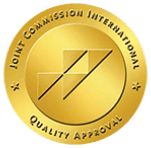Stimulant Addiction Treatment in WA
People get tired and run out of energy. This is a natural occurrence and a necessary limitation on the human body. To compensate for this, many people use substances known as stimulants to boost their energy levels, awareness, and ability to concentrate. Unfortunately, stimulants are also immensely habit-forming, and with the sheer number of people who are steadily falling into heavy dependence on the substance, there is a clear need for stimulant addiction treatment facilities.

Why are Stimulants so Addictive?
Many people have come to see anything that gives them an extra boost as a necessity. This is why coffee, energy drinks, over-the-counter stimulants and cigarettes are among the bestsellers any store could ever have. Coffee is the most popular source of caffeine, while cigarettes have nicotine, which are both legal stimulants. Energy drinks have a variety of ingredients that give people a small energy boost, mostly coming from caffeine, sugar, and legal stimulants such as guarana, taurine, and L-carnitine.
Prescription stimulants such as Ritalin and Adderall, however, provide a bigger boost when taken. These medications can give a person significantly improved concentration and alertness, which is why they are used to treat conditions like attention-deficit hyperactivity disorder (ADHD) where people find it nearly impossible to focus on anything. Illegal stimulants such as amphetamines, methamphetamines (meth), and cocaine provide the biggest boost of all, along with the greatest risk of addiction. There are many instances where people get hooked after trying these illegal substances just once.
This is because apart from the alertness, focus, and energy boost provided by stimulants, they also give a feeling of euphoria when used. The euphoric feeling combined with the added energy and focus is more than enough to hook practically anyone, and more often than not, a “trial” of stimulant use gives way to chronic use and then full addiction.
How Many Americans have a Stimulant Addiction?
Data taken from the 2020 National Survey on Drug Use and Health revealed some highly disturbing statistics relevant to stimulant addiction.
- In 2020, at least 758,000 people aged 12 and above abused prescription stimulants
- At least 10.3 million Americans (7% of the US population) misused a type of central nervous system stimulant in the past year
- Roughly one-third of the 10.3 million Americans who abused stimulants used cocaine
- Another one-third of the 10.3 million Americans who abused stimulants used prescription stimulants only
- Roughly 1 in 7 of the 10.3 million Americans who abused stimulants used methamphetamine
How Does Stimulant Addiction Begin?
Stimulant addiction often begins in seemingly harmless ways, such as when a student is having a hard time catching up and is offered some “help” by a classmate who was already into stimulants. For professionals, it is mostly due to the immense pressure at work where any advantage would be welcome. In both instances, the prevailing thought is that “something this good can’t be all that bad,” as the initial benefits of stimulant use overshadow the gradual addiction that the user is already developing.
The fact that there are prescription medications with stimulants as an active ingredient makes this substance relatively easy to get. It is no secret that stimulants are among the easiest street drugs to purchase, which adds to the dilemma of state authorities desperately trying to stop the distribution and sale of the substance.
In practically every stimulant addiction scenario, any kind of preventive instinct a person might have relevant to addiction seemingly shuts off or is completely ignored mostly because there is evidence that stimulant use produced favorable results. This alone makes the entire “just say no” argument quite difficult to push, as the alternative could mean going back to the “inferior version” of the stimulant user.

What are the Signs and Symptoms of Stimulant Addiction?
Stimulants directly affect the brain, and as such, the effects are bound to be pronounced in almost every aspect of the body, including fine motor control, behavior and attitude, and even cognitive functions.
Depending upon the extent of stimulant use, a person who is hooked on this substance could manifest a number of these signs and symptoms, or perhaps even all of them. Most of these symptoms could come and go also depending upon the extent of stimulant use. Treatments like a medically-assisted treatment program are highly beneficial in this scenario.
- Inclination to deceptive behavior such as lying or stealing
- Exhibiting bursts of energy or motivation
- Inexplicable episodes of aggression or belligerence
- Inclination toward risky or impulsive behavior
- Sudden increase in confidence
- Tendency to overestimate own capabilities
- Inexplicable hostile behavior
- Faster speech patterns or incoherent speech
- Loss of appetite
- Jitteriness
- Tachycardia (rapid heart rate)
- Hypertension (elevated blood pressure)
- Weight loss
- Hair loss
- Profuse sweating
- Various skin issues such as acne outbreak
- Severe tooth decay (for methamphetamine users)
- Severe gum disease (for methamphetamine users)
- Development of liver, kidney, lung, or cardiovascular damage
- Gastrointestinal problems
- Unexplained seizures
- Death (due to complications)
- Frequently dilated pupils
- Chest pains
- Inexplicable itchy sensation on the skin
- Hyperventilation
- Shortness of breath
- Dizziness
- Headaches
- Hyperfocus
- Sudden influx of ideas
- Inability to retain most of the new ideas
- Enhanced sensory awareness
- Racing thoughts
- Confusion
- Paranoia
- Hallucinations
- Delusions
- Poor judgment and decision-making
- Anxiety
- Depression
- Memory problems
- Psychosis
- Panic attacks
What Other Risks Come with Chronic Stimulant Use?
The effects of stimulant addiction go straight to the nervous system and are then cascaded down into other areas of the body, as the substance also has other components that are absorbed into the blood and circulated around the body. As such, there are also other risks or complications that arise due to chronic stimulant use. These include:
Stimulants have been used by people seeking to drop a significant amount of weight in just a short period of time. The problem with this is that such weight loss could be a significant shock to the body. On top of that, a weakened body deprived of food could also trigger the onset of other complications, such as organ failure.
The palpitations that go with stimulant abuse are already a stark warning that continued use could result in a severe reaction due to chronic blood pressure fluctuations. A person could either suffer from a heart attack or a stroke in this manner, and it is not uncommon for chronic stimulant users to go into cardiac arrest or even hemorrhagic stroke.
Cocaine snorters are known to suffer from frequent nose bleeds as the blood vessels in their nose get severely irritated from inhalation of stimulants in powder form. This is not the only damage that happens to people who snort cocaine on a regular basis. Various pulmonary complications could also arise from this habit, particularly when the body already becomes prone to disease due to malnutrition and health neglect.
Studies have been done on the possible effect of chronic stimulant use on the reproductive system, and in men, it has been discovered that stimulant abuse often leads to impaired semen production and compromised sperm motility. While these studies have yet to be agreed upon by the collective medical community, there is more than enough evidence done on experiments with animals and their reproductive cycle when exposed to stimulants.
Most people who have a substance abuse disorder end up being sickly and often have a serious illness derived from their illicit substance use. People with stimulant addiction are known to be particularly vulnerable to infection due to a number of factors associated with stimulant use, such as infection through sharing of syringes used in drug use and high susceptibility to disease due to poor health and nutrition.

Is there a Chance of Co-occurring Disorders for Stimulant Addiction?
In the case of people who have ADHD, the risk of developing a co-occurring addiction to stimulants is already high. Apart from this condition, there are also a number of mental health issues that are associated with stimulant use, including:
- Depression
- Anxiety disorders
- Bipolar disorder
- Post-traumatic stress disorder (PTSD)
- Schizophrenia
- Eating disorders
It should be noted that these mental health issues are not conditions developed by chronic stimulant use, although long-time stimulant users are known to develop various forms of cognitive impairment, such as memory loss.
How is Stimulant Addiction Treated?
As with all forms of addiction treatment, it all begins with getting the patient to stop taking whatever substance they are addicted to and then flushing out the toxins so that the damage to the body could be stopped. From there, the patient needs to work with a therapist to build a mindset and behavior pattern that will help them deal with the massive urges to use substances again, and allow them to integrate into a normal life once more.
What makes medical detox for substance abuse so difficult for patients who have a stimulant addiction is the fact that they have to stop taking it. It is not uncommon for those hooked on stimulants, particularly to meth, to become violent or aggressive if they do not get their “fix”. To completely deprive them of it is almost a sure way to drive them into a violent frenzy. Thankfully, once the medical detox begins, patients are typically overcome with severe withdrawal symptoms to become a threat to the medical professionals attending to them.
Some withdrawal symptoms could be so severe that they are actually debilitating to the patient, which is why the medical detox process should always be done in a clinical setting where medically-trained personnel are always on hand to see to any potential medical emergency the patient might suffer from.
Many people who had a stimulant addiction necessarily need to be checked into an inpatient rehabilitation program to help mitigate the medical issues brought on by stimulant abuse. There are many physiological and psychological effects that come out during the rehabilitation phase that require constant care from medical personnel and a therapist. The drastic changes initiated by stimulant abuse could require medical attention to bring back to normal, not to mention the fact that the patient could be in a very vulnerable state both physically and mentally following the ordeal of detox and withdrawal.
As the patient improves in their recovery process, there is now a need to ensure that they are able to properly and effectively re-integrate into a life outside of the rehabilitation facility. An outpatient program slowly allows the patient exposure to the outside world once more and interaction with people outside such as family and friends.
Although required to report back to the rehabilitation facility for daily therapy, outpatient rehab, intensive outpatient program and partial hospitalization program is not as restrictive as the conditions of inpatient rehabilitation, which is a way of also preparing the patient to take on a more independent role in maintaining sobriety.
Support groups enable the patient to continue to experience the support and care that they had while still in rehabilitation while being grounded in the reality of the world outside the treatment facility.
Many are not always to take on the challenges of daily life outside of the facility, where the stresses and troubles could be more than enough to drive them back to using substances, which is why support groups provide a temporary safe haven for them to share their troubles and thoughts with like-minded individuals, and gain insights from others that might help them deal with their own concerns.
Bayview Recovery Can Help You Stay on the Road to Sobriety
Helping a person maintain sobriety is a balancing act between offering ample support when the patient needs it and allowing them to find their own way back to recovery, as their lives are their own to live, and as such, should be free of any dependencies. This is something that is integrated into every practice here at Bayview Recovery, where the treatment is always tailored to the needs of the patient. The decision, and the will to stay sober will always be with you, but we will always be here when you need help. Talk to us now.

“The staff at the center has been remarkable in their care for our loved one. Tuni was with us the whole way as we tried to get this person into treatment. They continue to assist us as the process continues. Great work!”
Ray O
“I have been trying to get sober the past 3 years and I have been to treatment 5 times. Bayview Recovery was my 6th time. They helped me get to 142 days sober! I was a handful hot mess when I got there but the team never gave up on me. They work with families and they truly care about them too. Bayview house’s are clean and comfortable and the staff is amazing. They plan for fun events weekly and they want you to have fun. If your looking for something different call them it will save your LIFE!”
Cindy J
“Bayview is dedicated to providing clients the healthiest environment to develop a solid foundation in their recovery. The therapists and medical team are devoted to ensure clients have the best individualized care. I highly recommend Bayview for anyone seeking a highly professional treatment program. The care and compassion given to clients is remarkable.”
Robin M
“This is a fantastic facility with outstanding staff. If you or a loved one is struggling this is a great program to start the journey of recovery and get life long skills and relationships to begin a new life!”
Garrett T
“Just picked up our daughter after 90 days at Bayview Recovery. Loved the staff and facility, do not know what the future holds ???????? but while at Bayview , always felt informed. Highly recommend, incredibly helpful especially at the very beginning when we were so helpless and needed help the most – God Bless.”
Rosie S
Dave Cundiff, MD, MPH is an experienced leader in the field of Substance Use Disorder treatment. He works with patients suffering from Substance Use Disorder to evaluate their medication needs and prescribe treatments accordingly. In addition, he regularly participates in all-staff debriefing sessions involving peers, nurses, and other prescribers. He also reviews and advises on policies, procedures, and techniques for treating substance use disorder.




